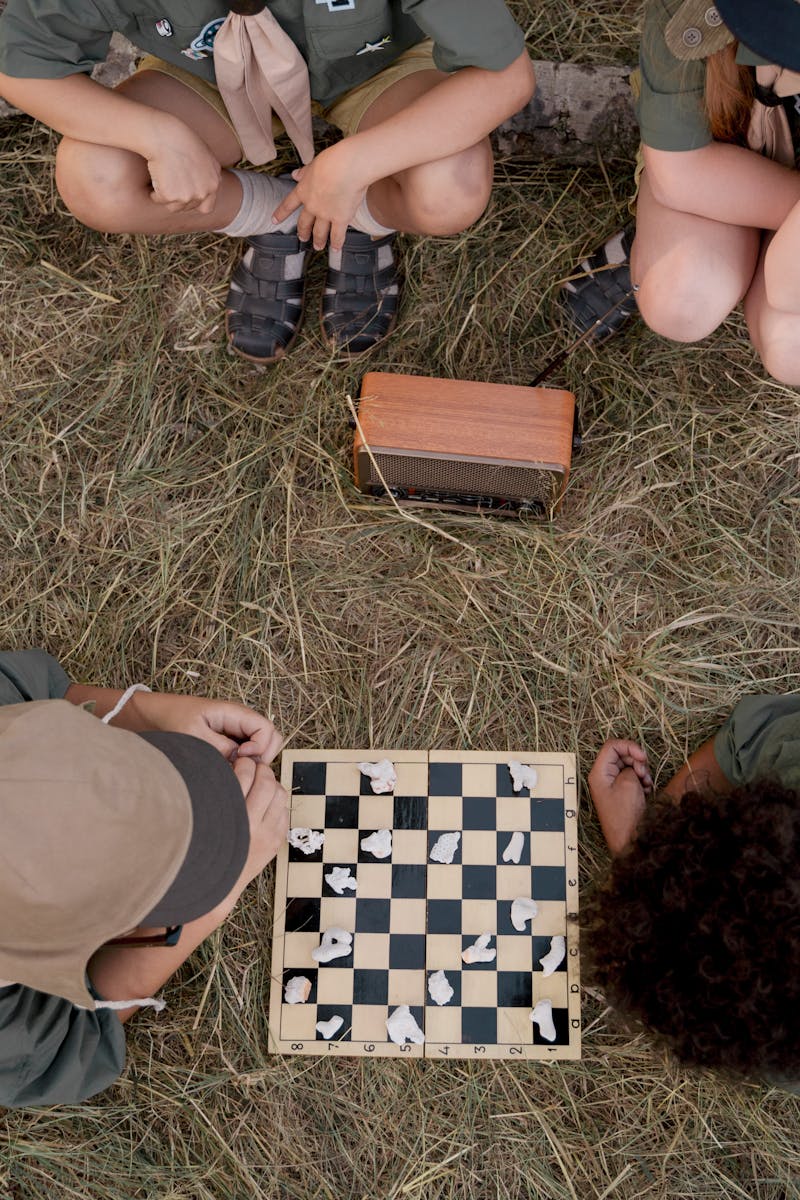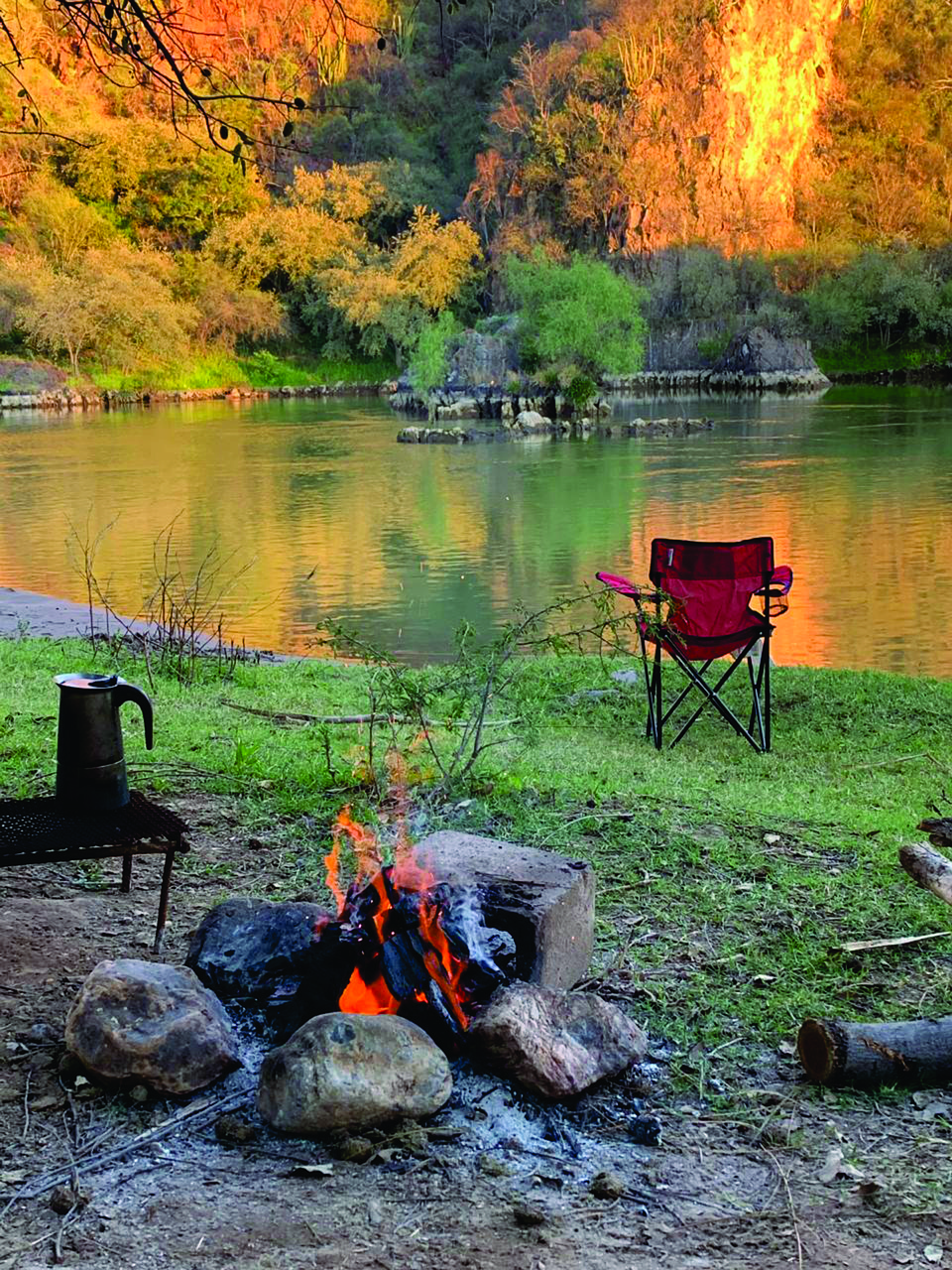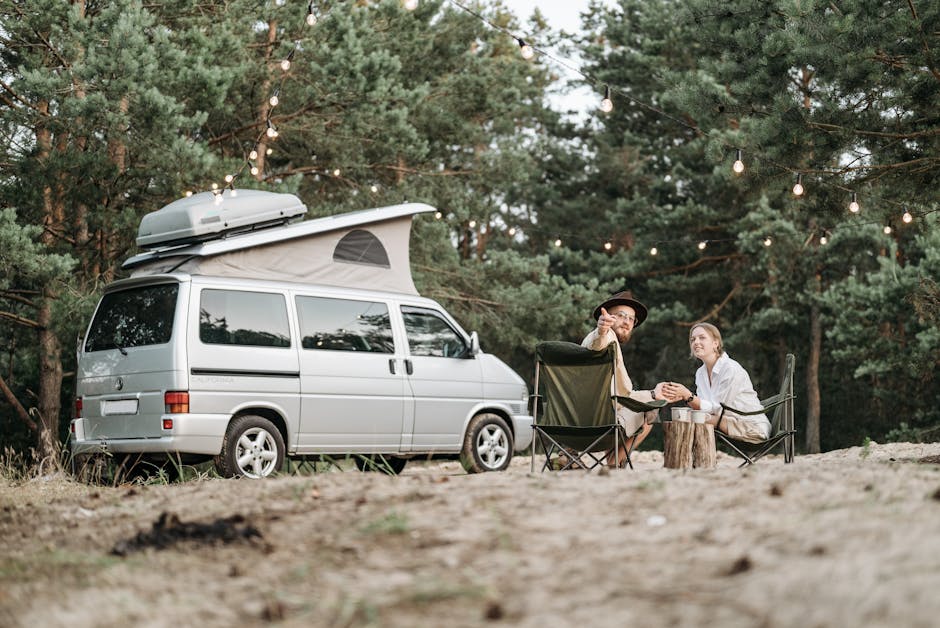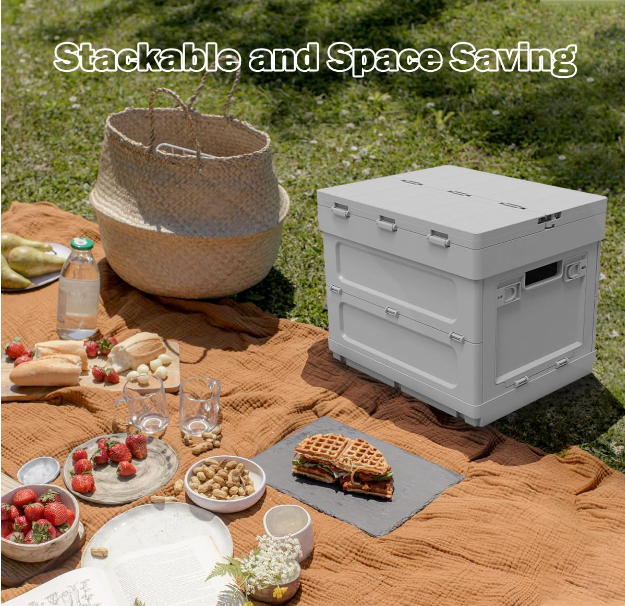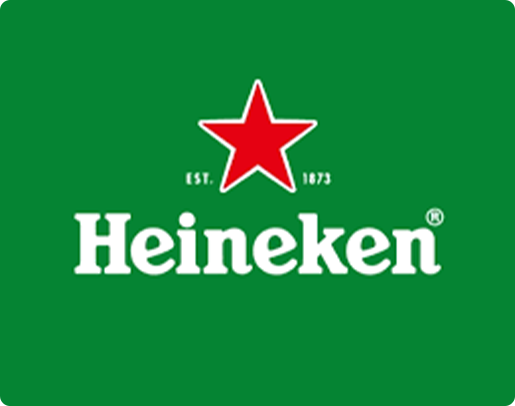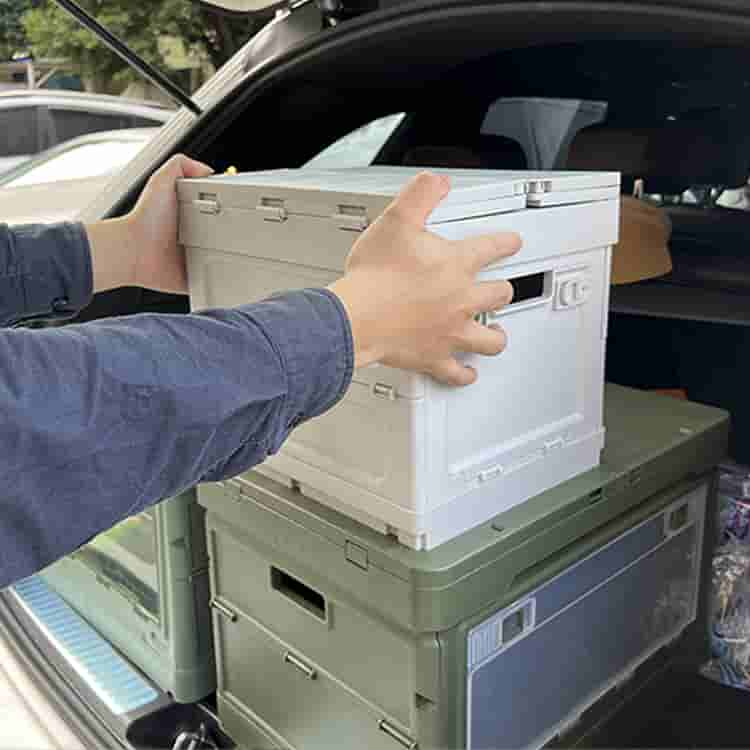Folding Storage Boxes: E-commerce Bestsellers vs. Custom Branded
Folding box— A Comprehensive Quality Comparison
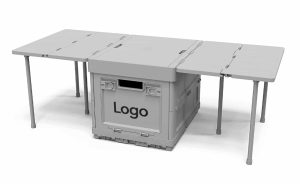

The global demand for folding storage boxes has surged with the rise of home organization trends, outdoor living, and promotional marketing. From low-cost products sold through e-commerce channels to high-quality, tailor-made solutions designed for brand promotion, folding crates now serve vastly different functions.
Choosing between an off-the-shelf folding box and a custom folding storage box depends on your specific needs. This guide compares the two options across six key areas: materials, structure, durability, appearance, use cases, and business return. Whether you’re sourcing for retail, events, or product packaging, this article will help you evaluate which type of folding box suits your goals best.
Material Quality — More Than Just Plastic
E-commerce Boxes Use Basic or Recycled Plastics
Many popular folding boxes sold online are made from standard polypropylene (PP) or low-grade recycled materials. These plastics are inexpensive and widely available, but they present several issues:
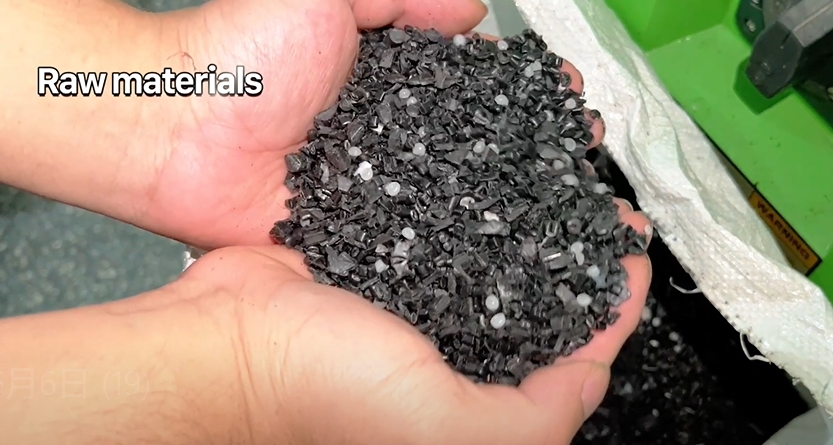
-
They tend to crack or deform under heat or pressure.
-
Their color consistency may be poor, leading to mismatched units in bulk orders.
-
Some carry chemical odors, making them unsuitable for use near food or children.
These drawbacks limit their usability in outdoor, industrial, or promotional environments.
Custom Crates Use Certified, Durable Materials
In contrast, custom folding storage boxes are built with higher-grade polymers. Suppliers offer several options depending on your intended use:
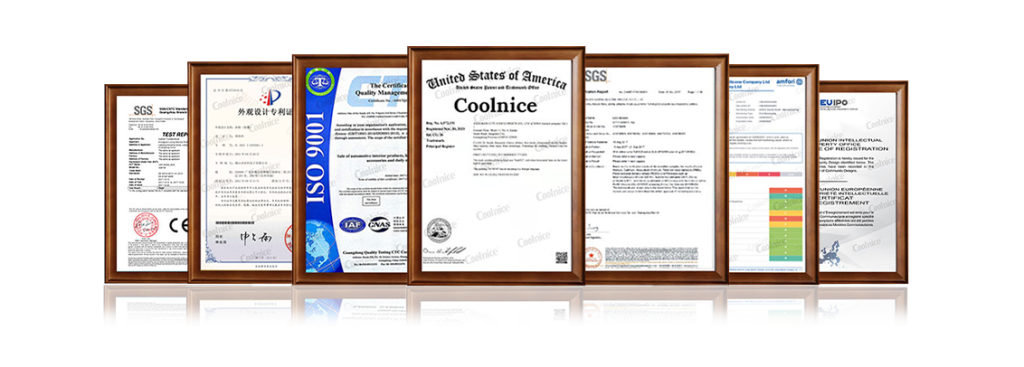
-
Modified PP with fiber reinforcement for added strength
-
UV-resistant materials for long-term outdoor exposure
-
Food-grade PP for beverage or grocery promotions
-
Low-temperature resistant plastic for refrigeration or winter use
Most custom products come with supporting documentation, such as RoHS, REACH, or SGS compliance certificates.
Well-selected materials ensure durability, brand safety, and compliance in regulated markets.
Structural Engineering — How Design Impacts Performance
Simplified Structures Are Common in Low-Cost Boxes
Budget folding boxes typically use a four-wall insert system, often without reinforcement at stress points. The hinges are usually molded plastic tabs, which weaken over time.
These designs are fine for storing towels or toys at home. However, when used for heavier items or in outdoor situations, their structural weaknesses become apparent. Common failures include warped lids, popped joints, or cracked corners.
Custom Crates Offer Enhanced Mechanical Design
Custom branded crates benefit from engineering tailored to function and longevity. Common features include:
.png)
-
One-piece bottom plates that improve load distribution
-
Reinforced sidewalls to prevent flexing under pressure
-
Dual-locking systems for safer transport
-
Anti-slip feet for better stacking on smooth surfaces
-
Smooth fold-and-lock mechanics that prevent jamming
Some models also include tabletop surfaces, fold-out trays, or interior partitions for multifunction use.
Stronger design increases the number of cycles a crate can survive without damage, lowering replacement costs.
Durability and Load Capacity — Built to Last or Built to Sell?
E-commerce Folding Boxes Are Often Disposable
Most consumer-grade folding boxes claim to support between 20 and 40 kilograms. However, field testing often shows real-world performance below those figures, especially after repeated use.
Additionally, cheaper products are not tested for long-term fold cycles. Hinges may break or snap after a few hundred uses, making them unsuitable for business operations that require constant reuse.
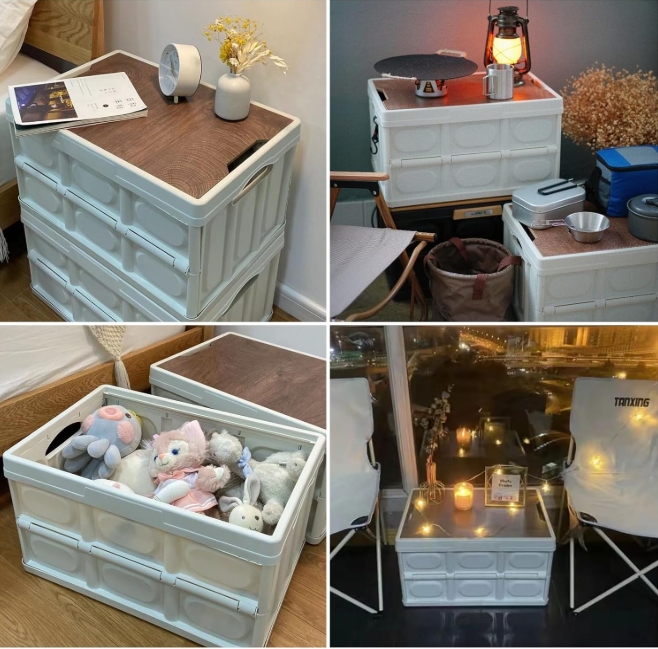
Custom Folding Boxes Withstand Heavy Loads and Frequent Use
High-end custom crates are tested for heavy-duty performance:
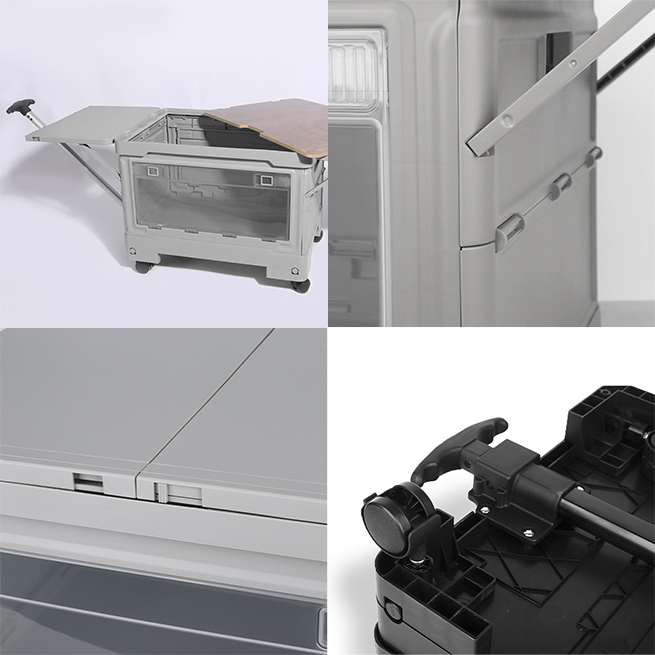
-
Typical load capacity: 60 to 120 kilograms
-
Maximum tested loads: Up to 150 kilograms
-
Folding cycle rating: 3,000+ folds with no visible wear
These crates can be safely reused for years, making them ideal for trade shows, warehouse operations, retail packaging, and camping applications.
Businesses benefit from fewer damaged goods, fewer replacements, and more reliable performance under stress.
Visual Design and Branding — Function Meets Aesthetics
Generic E-commerce Boxes Offer Limited Customization
Low-cost boxes are usually only available in neutral colors like gray, green, or black. They cannot be branded. Even if stickers are added, they may peel off under moisture or sun exposure. As a result, they offer little value in marketing, display, or public-facing use.
Custom Boxes Are an Extension of Your Brand
Branded folding storage boxes can be customized with:


-
Pantone-matched color schemes
-
Silk-screen or UV logo printing
-
Molded-in QR codes or slogans
-
Custom-sized packaging sleeves and inserts
These design options allow the box to serve as a mobile advertisement for your business. Whether used in livestreaming, showroom setups, retail giveaways, or customer unboxings, the box reinforces brand presence.
Custom crates transform storage into brand storytelling.
Use Cases and Market Value — Not Just a Box
E-commerce Boxes Fit Individual or One-Time Use
Examples include:

-
Organizing home closets
-
Holding children’s toys
-
Temporary storage during moves
-
Short weekend camping trips
They fulfill basic needs but offer no strategic value for brands or businesses.
Custom Folding Crates Support Multi-Channel Business Use
Use cases for custom folding storage boxes include:
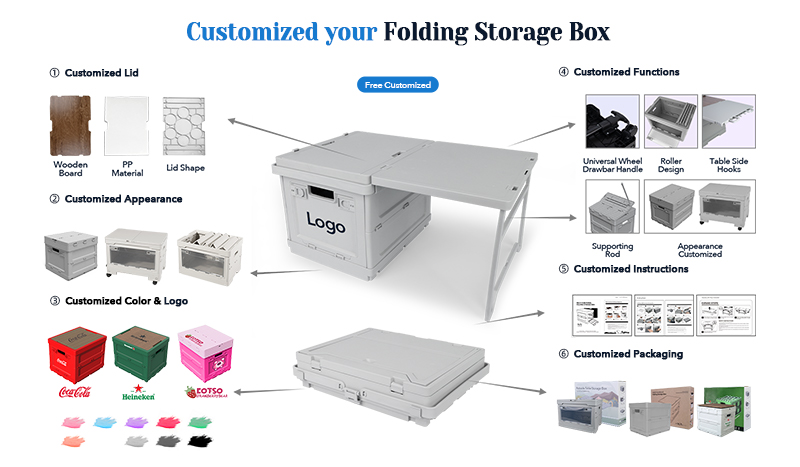
-
Retail packaging: Create a cohesive unboxing experience
-
Trade show display: Double as tables and storage bins
-
Outdoor events: Serve as mobile furniture with branding
-
Product bundling: Combine products into reusable branded kits
-
Corporate gifting: Add prestige to seasonal or promotional gifts
They’re also commonly used in car trunk organization, warehouse operations, and e-commerce logistics.
These crates are not just containers—they are tools for engagement, retention, and brand recognition.
Cost vs. Long-Term ROI — Cheap Today or Smart Investment?
E-commerce Boxes Appear Cheaper, But Cost More Over Time
A typical folding box may cost only $8, but if it breaks every 2 months, that’s $48 per year. Multiply this across teams, events, or retail channels, and your real cost increases fast.
More importantly, broken boxes damage your brand’s professional image and create unnecessary waste.
Custom Branded Folding Box Deliver Long-Term Value
Custom folding boxes may cost $5 to $18 per unit. But they:
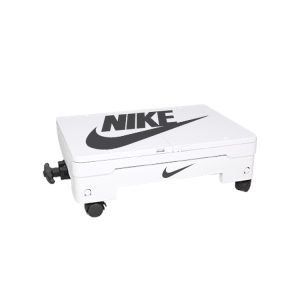
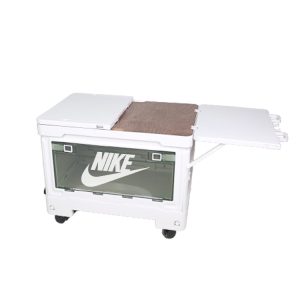

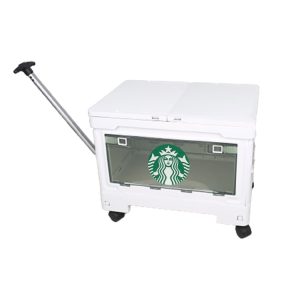
-
Last longer
-
Perform better
-
Generate brand impressions every time they are seen
For promotional use, they create a premium feel that translates into improved conversion rates, stronger brand recall, and a more memorable customer experience.
A folding box that looks good and works well reinforces your brand without saying a word.
Comparison Table — E-commerce vs. Custom Folding Crates
| Feature | E-commerce Folding Box | Custom Branded Crate |
|---|---|---|
| Material | Basic PP or recycled plastic | Modified PP / UV / food-grade |
| Structure | Basic joints and tabs | Engineered lock-in design |
| Load Capacity | 20–40 kg | 60–150 kg |
| Folding Durability | ~300–500 cycles | 3,000+ cycles |
| Branding | logo | Full logo and design support |
| Appearance | Neutral colors only | Pantone color customization |
| Marketing Value | Low | High brand visibility |
| Cost Efficiency | Short-term | Long-term return on investment |
Final Verdict — Which Folding Storage Box Is Right for You?
If your goal is simple household storage or short-term convenience, an e-commerce folding box may do the job. It’s quick to buy and good enough for one-time use.
However, if you represent a brand, manage a business, or plan campaigns, custom folding storage boxes offer much more:
-
Better quality and lifespan
-
Marketing exposure through branded visuals
-
Greater customer satisfaction
-
Real ROI through reuse and recall
Choose the tool that matches your business goals—not just the cheapest option.
Let your storage carry more than items. Let it carry your brand forward.


